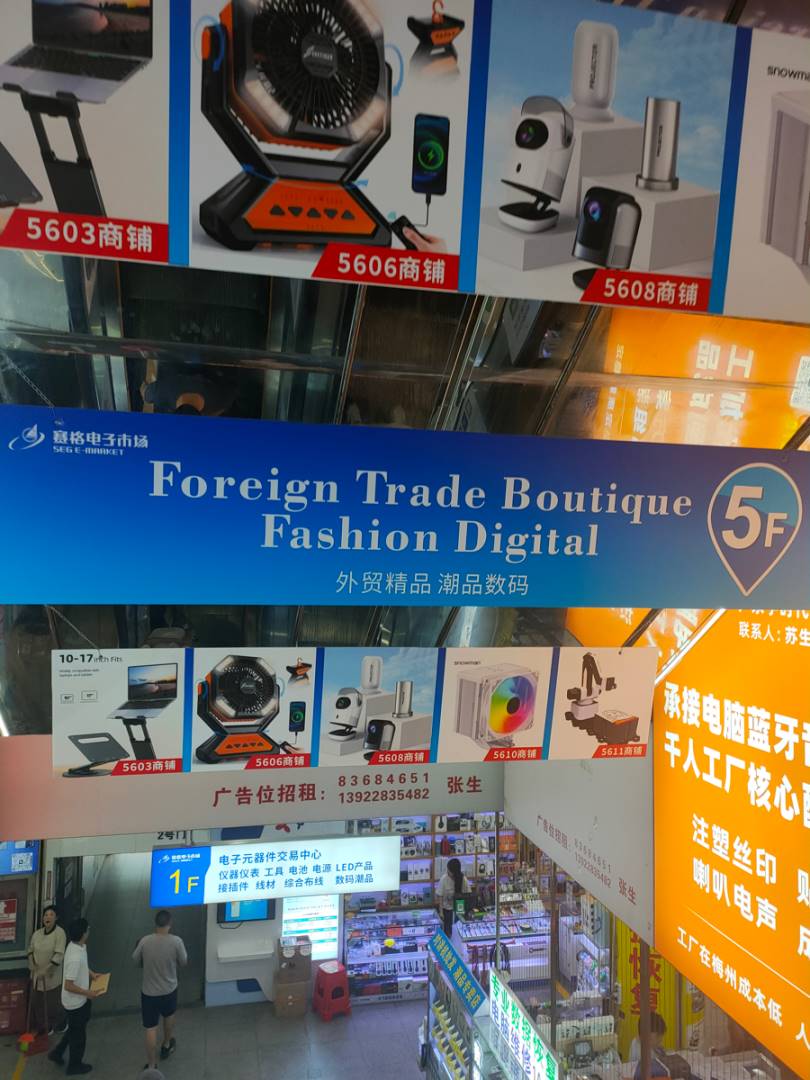Written by: Cao Yuan, 21st Century Economic Report
In current foreign trade, more and more merchants are noticing the use of stablecoins for cross-border payments.
Earlier, a reporter from the 21st Century Economic Report visited Yiwu, known as the "world's largest small commodity distribution center", to investigate merchants' use of stablecoins. The findings revealed that most merchants had never heard of or understood stablecoins; some merchants questioned their compliance and costs; only a few merchants supported stablecoin payments.
In Shenzhen's Huaqiangbei, known as China's "first electronic street", which boasts a massive electronic component trading market and attracts suppliers and buyers from around the world.
Recently, the reporter visited five shopping centers in Shenzhen's Huaqiangbei, including Seg Electronics Mall, Seg Communication Market, Modern Window Digital Plaza, Yuanwang Digital Mall, and Longsheng Parts City, interviewing dozens of merchants across these markets. The reporter also consulted over 20 Huaqiangbei merchants online to explore their stablecoin transaction practices: only a few merchants indicated they would use or try to use stablecoins for transactions, while most merchants stated they were unfamiliar with stablecoins.
Stablecoins are cryptocurrencies pegged to fiat currency. Taking USDT, currently the largest stablecoin, as an example (often abbreviated as "U"), 1 USDT is anchored to 1 US dollar. This year, driven by legislative progress in the United States and Hong Kong, China, the stablecoin track has seen a global surge.

Shenzhen's Huaqiangbei, China's "first electronic street" (Photo / Cao Yuan)
A Few Merchants Tentatively "Test the Waters"
During the reporter's visit, a few Huaqiangbei merchants said they would use or try to use stablecoins for transactions. A merchant selling 3C electronic products said, "Some people around me are trading crypto with stablecoins. I'm considering using stablecoins for overseas receipts, but I haven't completed any transactions yet."
In addition to offline visits, the reporter randomly consulted over 20 Huaqiangbei merchants online, with two indicating they could accept stablecoins. Another stablecoin exchange merchant online told the reporter, "Some foreigners inquire about paying with stablecoins because it's convenient."
Most interviewed Huaqiangbei merchants said they were "unclear about what stablecoins are". Even those who had heard of stablecoins believed they were unrelated to their daily operations.
A hairdryer merchant said, "Currently, most foreign buyers still pay with cash or Alipay. My largest recent overseas remittance of 30,000 US dollars was transferred through Alipay by someone else."
Another CPU merchant stated, "We only use legal tender and have never used stablecoins." A graphics card merchant asked the reporter, "Are stablecoins like Bitcoin? What use do they have for me?"
When the reporter consulted staff from two Huaqiangbei shopping centers, they also said, "As far as I can recall, no merchants use stablecoins. Let me check further."

Huaqiangbei Seg Plaza (Photo / Cao Yuan)
Even if individual merchants are interested in receiving stablecoins, the next step of "cashing out" remains in a gray area, typically done through so-called "U merchants". "U merchants" refer to virtual currency exchange merchants or crypto OTC (over-the-counter) traders. They primarily earn profit margins by providing exchange services between stablecoins USDT (often abbreviated as "U") and fiat currency in virtual currency markets.
The reporter's investigation found that different "U merchants" set various transaction thresholds for "receiving U", focusing on large transactions. One "U merchant" directly told the reporter, "We don't handle small 'U receipts', only large volumes, starting from 50,000 U, which can be collected in batches of several thousand." Another "U merchant" suggested direct offline trading upon learning of the reporter's "U selling" need.
Regarding exchange rates, using USDT as an example, 1 USDT is pegged to 1 US dollar. Most "U merchants" will slightly lower the day's exchange rate by a few decimal points when "receiving U", with some charging additional fees. "Buy lower than market price, sell higher than market price," one "U merchant" explained simply. Another calculated, "I have a uniform price without a price list. For instance, if you have 100 stablecoins worth 100 US dollars, I'll give you 97 US dollars cash, with a fee of 0.03 yuan per coin."
Who are these "U merchants'" downstream buyers, and who will "take over" their collected stablecoins? The aforementioned "U merchants" said, "Some we'll sell on exchanges, and some fellow traders will buy."
Compliance Risks Need Prevention
Are some merchants paying attention to stablecoins and even using them for international trade?
Tianyang Technology, considered a "stablecoin concept stock", summarized in response to investor questions that: first, arrival time is uncertain, depending on the SWIFT transaction counterparty's link design; second, fees are non-transparent, also depending on intermediary banks; third, transaction status is unclear, despite SWIFT's paid query service, current fund progress is unknown to both sender and receiver.
Stablecoins offer certain advantages in cross-border payment settlement. "The biggest difference between stablecoins and other virtual currencies is their peg to fiat currency, making them relatively stable, thus reducing their financial investment attributes and highlighting their fund settlement attributes," a bank's transaction banking department personnel told the reporter. "Stablecoins bypass traditional SWIFT banking systems, enabling point-to-point transactions on blockchain networks. However, this is currently illegal in mainland China."
It's important to note that using stablecoins for foreign trade settlement in China faces compliance risks.
"Currently, using virtual currencies for cross-border payments in China is definitely not allowed," emphasized Zeng Jie, senior partner at Guangqiang Law Firm and director of the Non-Illegal Fund Raising Case Defense and Research Center. Recently, Shenzhen and Beijing authorities have also issued risk warnings about potential illegal fundraising under the guise of stablecoins.
Regarding "U receipt and U payment" transactions, Zeng Jie believes this is essentially a definitional issue of virtual currency trading. Individual citizens' virtual currency trading investments, if conforming to public order and good morals, are personal investment transactions. If not conducting related business activities, the transactions are virtual commodity trades protected by law.




